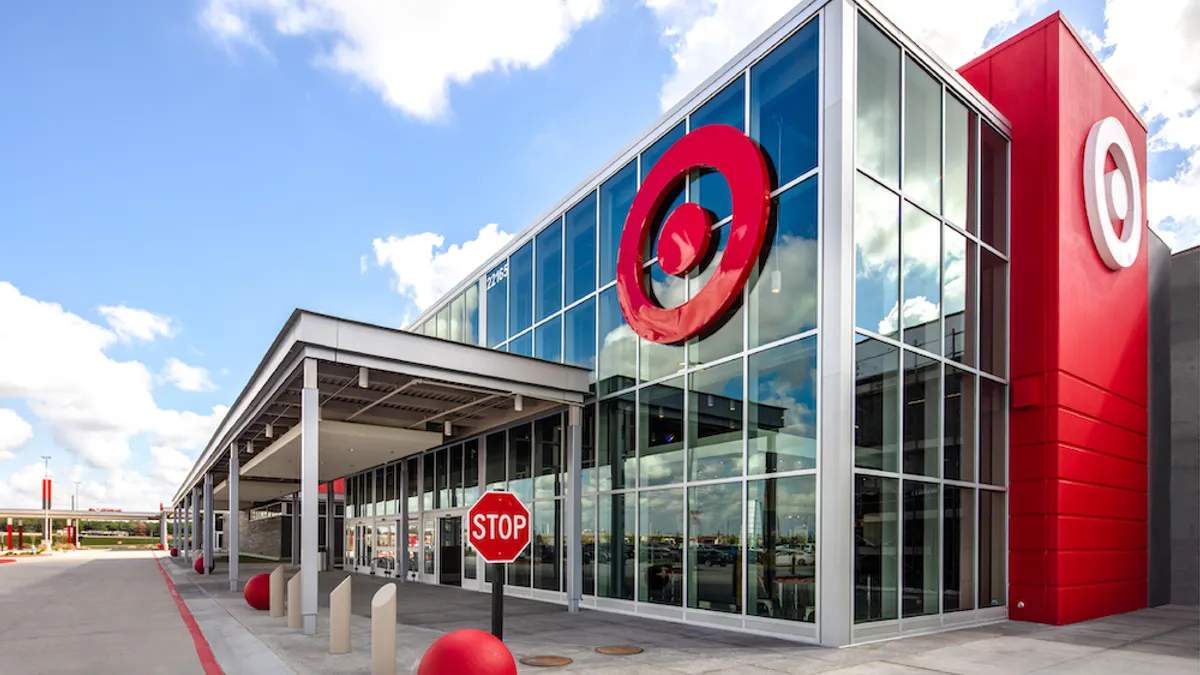Dive Brief:
- Target announced on Tuesday it’s closing nine stores in four states, effective Oct. 21. The retailer said it has been unable to manage theft and organized retail crime at these locations, which threatens the safety of store employees and customers, and contributes “to unsustainable business performance.”
- Three stores will close in the San Francisco and Oakland, California, region; three will close in the Portland, Oregon, area; two are closing in the Seattle area; and one store is closing in New York City.
- Target said it decided to close these locations after investing in more security staff, using third-party guard services and implementing theft-deterrent tools didn’t work. The retailer said it continued “to face fundamental challenges to operating these stores safely and successfully.”
Dive Insight:
Months after facing backlash from all sides on how it responded to the controversy over its annual Pride Month celebration and merchandise, Target is again choosing to back down in the face of what it describes as another set of threats to employee and customer safety.
During the company’s Q2 earnings call, CEO Brian Cornell said that in the first five months of the year, stores saw a 120% rise in theft incidents that involved violence or threats of violence. Target said it takes store closing decisions “very seriously” and takes that step only after trying to address issues that negatively affect business performance and the customer experience.
“We know that our stores serve an important role in their communities, but we can only be successful if the working and shopping environment is safe for all,” the company said. Target thanked the employees at the stores slated to close and said all eligible employees at those locations will have an opportunity to transfer to other Target locations.
Shrink could cut Target's profits this year by more than $500 million, the company said in May. Nationwide, shrink — which includes losses due to theft, as well as operational or process mistakes and systemic errors — accounted for $112 billion in losses last year, according to a National Retail Federation report released Tuesday. Similarly to previous years, NRF reported that nearly two-thirds of retail shrink was due to theft. In the past year, the NRF said the metro areas of Los Angeles; San Francisco and Oakland, California; Houston; New York and Seattle were most affected by organized retail crime.
In its announcement, Target also detailed its ongoing efforts to combat theft and organized retail crime.
Its in-store strategies include using locking cases for theft-prone categories of merchandise and investing resources in training in-store leaders and security staff “so they can protect themselves and de-escalate potential safety issues associated with organized retail crime incidents.” Technology-related efforts to fight theft include tracking organized crime groups and expanding how data is monitored and analyzed to identify fraudulent activity.
“While we will continue to make meaningful investments throughout our business, we cannot solve this issue on our own,” Target said.
Earlier this month, California Gov. Gavin Newsom committed $267 million to fight retail theft. The funding will support new police units and law enforcement task forces and the installation of advanced surveillance technology.
California’s move signals the seriousness of the issue and other states may follow that lead, Appriss Retail CEO Michael Osborne said in an email to Retail Dive. Appriss Retail uses artificial intelligence to analyze data that can help identify loss, fraud or abuse of return policies. Understanding the true impact of theft on retailers can be challenging, though.
“The exact sources of loss across sectors differ based on factors such as the type of merchandise sold, the size of retail locations, or whether they sell online,” Osborne said. “Additionally, many retailers don’t include the more nuanced types of losses, like ecommerce or supply chain theft, within their shrink calculation, making direct comparisons even more challenging.”














